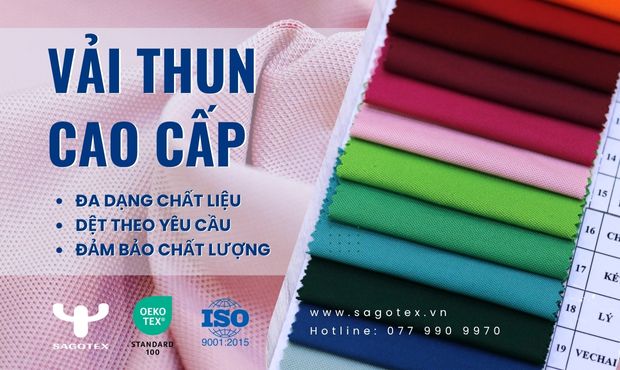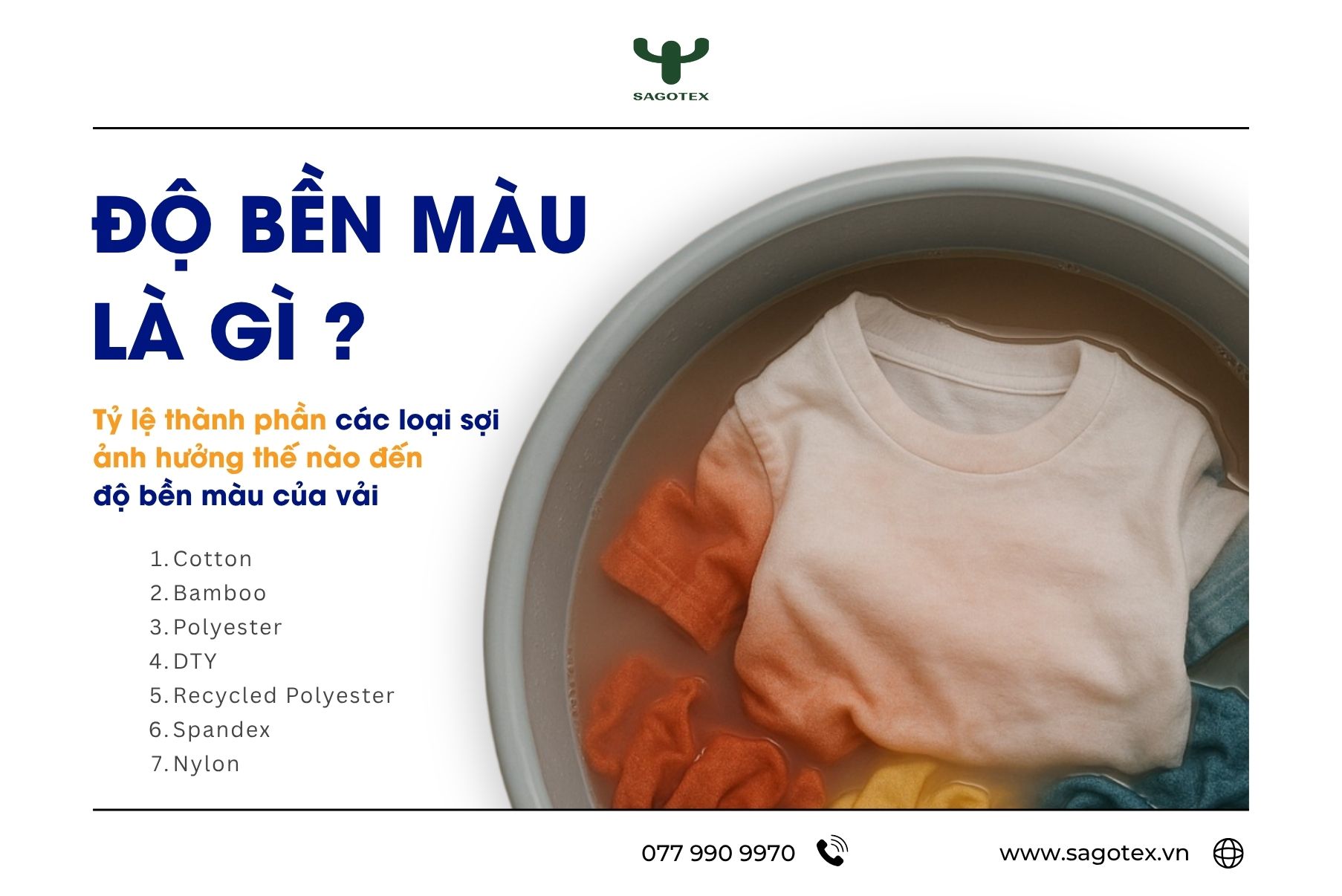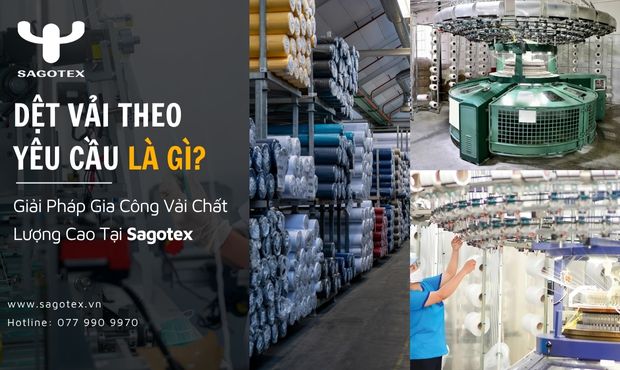How Fiber Composition Ratios Affect the Color Fastness of Fabrics
Color Fastness of Fabric – How Fiber Composition Ratios Affect It
One of the most important factors in evaluating the quality of a fabric is its color fastness — the ability to maintain a stable hue over time. A high-quality textile product is one whose colors remain vibrant after many washes or long-term use, without fading, bleeding, or discoloration.
Among the various factors that influence color fastness, the fiber composition ratio plays a particularly crucial role. Each type of fiber, whether natural or synthetic, has its own chemical and physical properties that determine how dye penetrates, adheres, and endures on the fabric surface.
This article will share in detail how each fiber type affects a fabric’s ability to retain color, helping readers understand why fabrics of the same shade may differ significantly in durability and saturation.
What Is Color Fastness
Color fastness refers to a fabric’s ability to maintain stable color when exposed to external stresses such as washing, abrasion, light exposure, sweat, or environmental conditions. In other words, it’s the degree to which the dye remains affixed to the fibers — resisting fading, bleeding onto other garments, or shifting in hue during use.
Typically, color fastness is measured on a scale from 1 to 5, where:
-
5 indicates very high durability — the color remains nearly unchanged.
-
1 signals poor performance — the fabric is prone to fading, bleeding, or instability in color.
In professional manufacturing, these ratings are validated via ISO 105 or AATCC 61 standards, employing tests for washing, abrasion, and exposure to light. Fabrics that score high in color fastness not only ensure long-term aesthetics but also help manufacturers maintain consistent product quality — especially for uniforms, sportswear, and premium fashion lines.
How Different Fibers Influence Color Retention
Cotton (Natural Fiber)
Cotton is widely used in textiles due to its softness, breathability, and absorbency. Its fibrous structure contains many twisted microtubes, allowing dyes to penetrate deeply into the fiber core. As a result, cotton often displays vivid, uniform coloration compared to many other natural fibers.
However, this high absorbency also makes cotton more susceptible to fading, especially with repeated washing or exposure to direct sunlight. Dye molecules can gradually be washed out or oxidized on the fiber surface over time.
To enhance durability, cotton is frequently dyed using Reactive Dyes, which chemically bind to cellulose in the fiber. This method helps anchor color deep within the fiber, reducing bleeding and fading. Additionally, cotton is often blended with polyester or spandex in optimized ratios to improve overall color stability while preserving a soft, natural hand.
Bamboo (Regenerated Cellulose Fiber)
Bamboo fiber is derived from natural cellulose in bamboo stalks through a chemical–mechanical processing route. It yields soft, fine fibers that are known for silky texture, high absorption, and a cooling sensation on skin, while also possessing natural antibacterial properties and environmental appeal.
When dyed, bamboo tends to absorb dyes rapidly and evenly due to its porous structure and high affinity for water. This often results in fresh, natural tones. However, that same high absorption may cause the fiber to become "oversaturated", leading to overly deep tones or, if color fixation is not carefully managed, to bleeding or fading after repeated washes.
Moreover, bamboo is fairly sensitive to light and high temperatures, meaning bright hues (such as greens, pinks, or oranges) are more vulnerable to fading when exposed to strong sunlight. To mitigate this, manufacturers frequently employ reactive dyes with strong chemical bonding or integrate fixing agents in final finishing steps. Furthermore, blending bamboo with polyester or viscose helps balance softness and color retention.
Polyester
Polyester is a synthetic fiber produced from petroleum derivatives. Its fiber structure is smooth, dense, and hydrophobic, which makes traditional water-based dyes difficult to adhere. As such, polyester cannot be dyed using dye types suited for cotton or bamboo.
Instead, it uses Disperse Dyes under high temperature and pressure. These dyes, being not water-soluble, diffuse into the core of the fiber and are locked in as the fiber cools. This process yields colors that are remarkably stable, resisting fading, bleeding, or discoloration even after numerous washes or sun exposure.
Another advantage of polyester is its mechanical strength, which helps color resist abrasion or stretching. Additionally, its better resistance to UV rays contributes to longer-lasting color when used in outdoor applications. Because of these attributes, polyester is often considered one of the most color-fast fibers and is commonly chosen for uniforms, sportswear, and garments demanding long-term color stability.
DTY (Draw Textured Yarn)
DTY is a form of polyester that is stretched (drawn) and given a textured (crimped) structure during manufacturing. This process imparts greater volume and elasticity compared to standard POY fibers. The textured structure helps the fiber catch light more evenly and promotes uniform dye distribution.
Because DTY undergoes stretching and thermal setting during fiber production, its geometry is more stable, permitting deeper dye penetration and more uniform color uptake. When dyed with Disperse Dye under optimal conditions, dye molecules can channel into fine grooves within the fiber, creating a strong, durable color layer and reducing unevenness.
Moreover, DTY includes slight elasticity, reducing wrinkles or deformation in the final fabric. This indirectly supports color consistency throughout the product’s life. Thanks to its combination of color durability, softness, and mild stretch, DTY is widely used in high-performance knitwear, sports fabrics, and premium apparel.
Recycled Polyester (rPET)
Recycled polyester, commonly known as rPET, is produced from post-consumer PET plastic bottles. After collection, cleaning, and reprocessing, the material is melted and spun into new fibers. Despite being recycled, rPET retains the chemical structure of virgin polyester, thus maintaining comparable strength and dyeing behavior.
When dyed with Disperse Dye at high temperatures, dye molecules diffuse into rPET and lock into place upon cooling, furnishing fabrics that are color stable, low-bleed, and fade resistant. Because of the slight surface texture resulting from the recycling process, rPET sometimes demonstrates marginally better dye affinity, helping color uptake appear more even.
Beyond technical advantages, rPET carries strong sustainable credentials: recycling thousands of plastic bottles, reducing waste and energy consumption compared to virgin polyester production. Given its durability and color retention, rPET is increasingly adopted in sportswear, uniforms, and eco-conscious fashion.
Spandex (Elastane / Lycra)
Spandex is a synthetic fiber known for its exceptional stretchability, able to extend 5–8 times its original length and then recover. Nonetheless, due to its low moisture affinity and a structure not conducive to deep dye binding, spandex is not typically used as a primary fiber. Instead, it’s added in small proportions (around 3–10%) alongside other fibers like cotton, polyester, or nylon to impart stretch and shape retention.
When fabrics containing spandex are dyed, the process still follows the method suited to the primary fiber. Spandex is not dyed separately; instead, it is safeguarded during the main dyeing phase by using controlled temperature, pH, and timing to avoid damaging elasticity or causing color fade.
In premium fabrics, manufacturers may use covered yarns, where spandex is wrapped with polyester or nylon. This construction helps maintain uniform color and durability under stretch, reducing the risk of color cracking or fading.
While spandex represents only a minor percentage of the blend, its contribution to flexibility, fit, and garment retention is significant in activewear and body-hugging designs.
Nylon (Polyamide)
Nylon, or polyamide, is a synthetic fiber characterized by excellent mechanical strength, good elasticity, and a smooth surface. Relative to polyester, nylon exhibits somewhat greater moisture absorption, which allows dyes to penetrate more easily. Nylon is typically dyed with Acid Dyes at temperatures between 80–90 °C in neutral or mildly acidic conditions, resulting in bright, vivid, and even color.
However, nylon’s primary drawback lies in its weak colorfastness under light and UV exposure. The chemical bonds in the polyamide structure are susceptible to breakdown from ultraviolet radiation, causing fabrics to fade or yellow over time when used outdoors. Additionally, nylon is sensitive to high heat and alkaline conditions, so it should be machine-washed at low temperatures and not overexposed to sunlight.
To offset these vulnerabilities, nylon is often blended with polyester or spandex, or treated with UV-protective and color-fixing finishes in the final processing. This allows modern nylon fabrics to balance durability, flexibility, and improved color retention, making them suitable for sportswear, outerwear, backpacks, and outdoor accessories.
Sagotex – Custom High-Quality Knit Fabric Production
With years of expertise in textile manufacturing, Sagotex recognizes that every fiber type, blend ratio, and dyeing process directly influences the color durability of fabric. That’s why we offer a custom knit fabric production service, giving brands the flexibility to specify fiber compositions, color palettes, performance features, and finishing methods tailored to their product and branding needs.
Contact Sagotex today for consultation and fast sample quotations!
SAGOTEX – Only the Best for You
-
Hotline: 077 990 9970
-
Email: info@sagotex.vn
-
Website: www.sagotex.vn
-
Fanpage: Sagotex.vn – Vải Thun Cao Cấp
-
Head Office: 45 Đinh Thị Thi, Vạn Phúc Urban Area, Hiệp Bình Phước, Thủ Đức, HCMC
-
Factory: Lô I1-2-3, KCN Tân Đức, Xã Đức Hòa Hạ, Huyện Đức Hòa, Long An
-68ef59b22bb98.jpg)
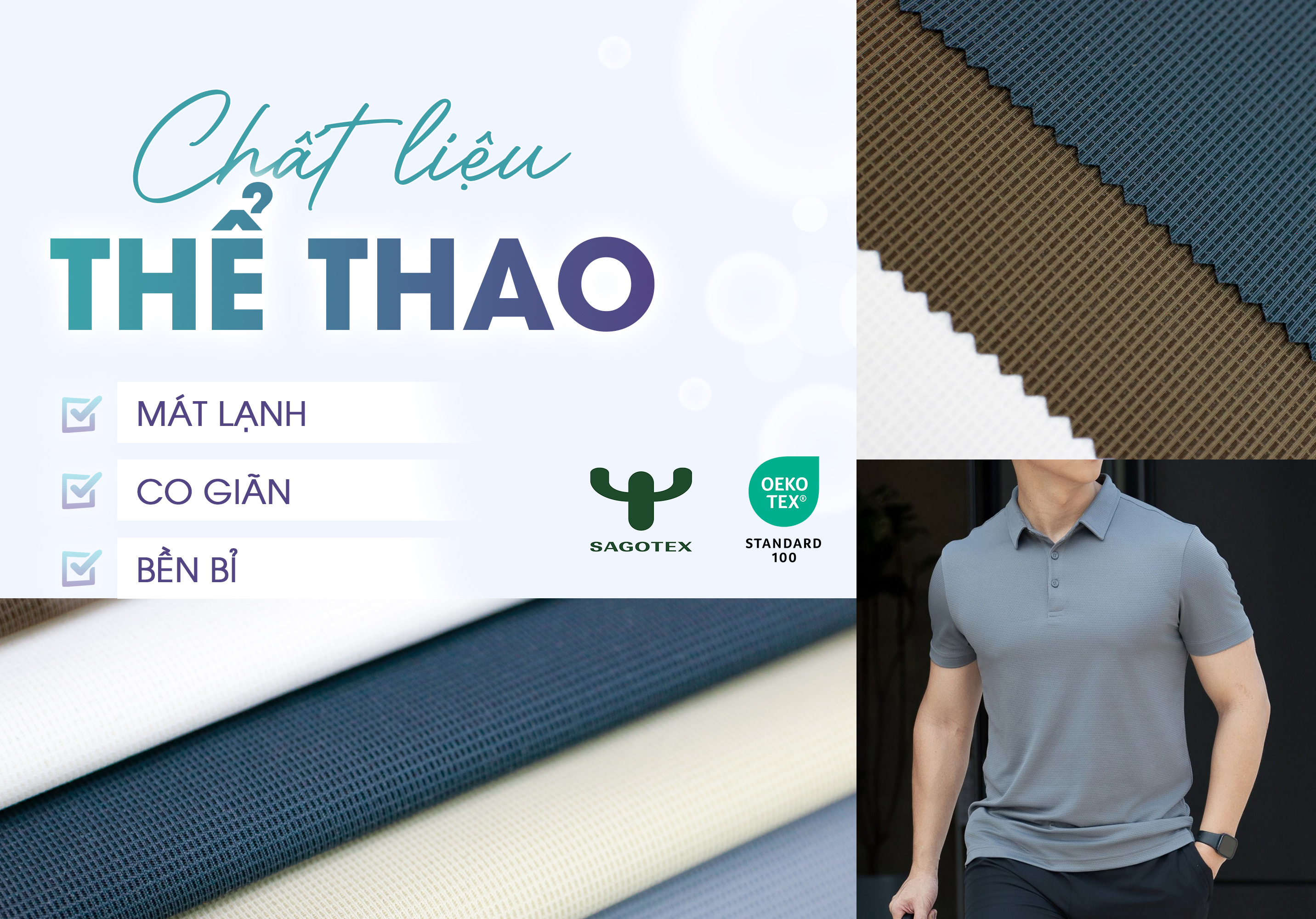
-68a58592e1203.jpg)
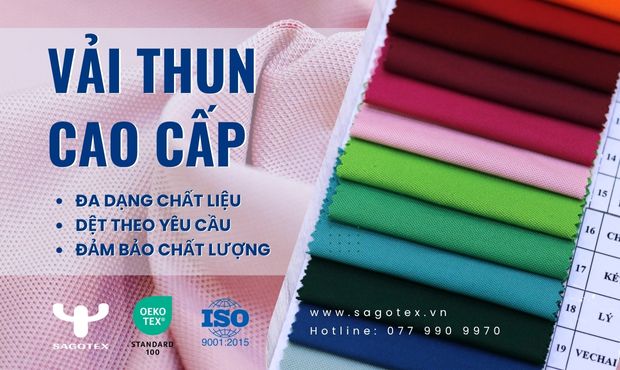
- 1
- 2
